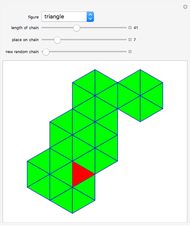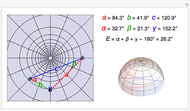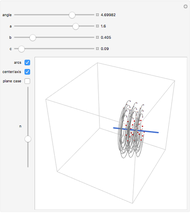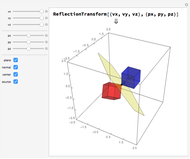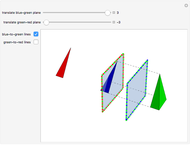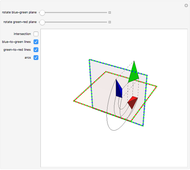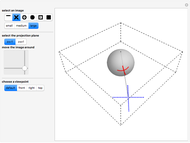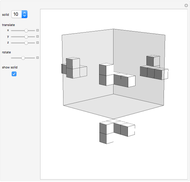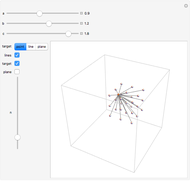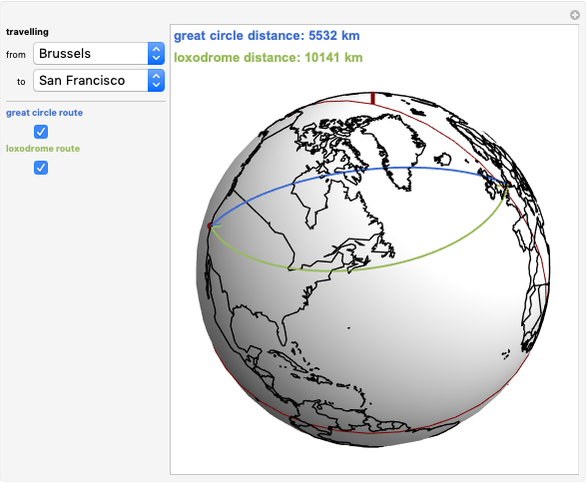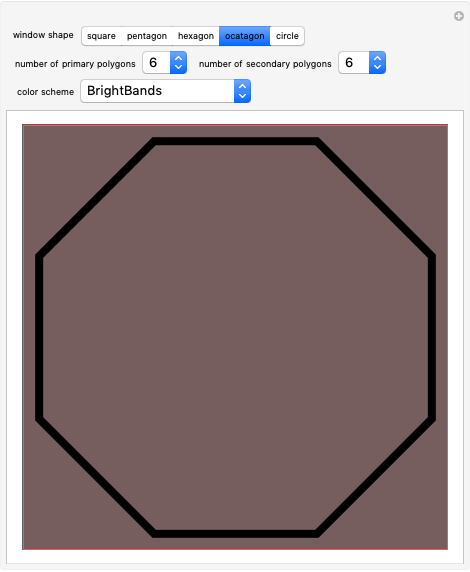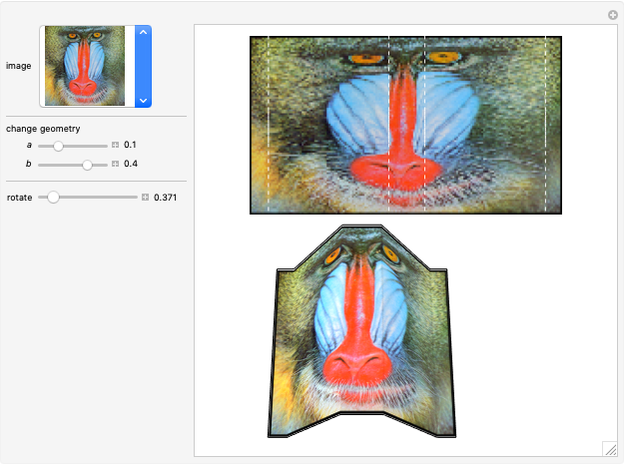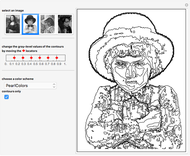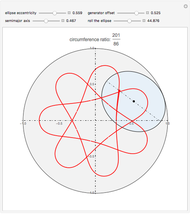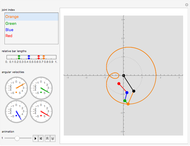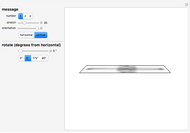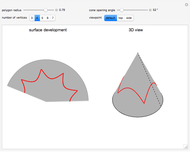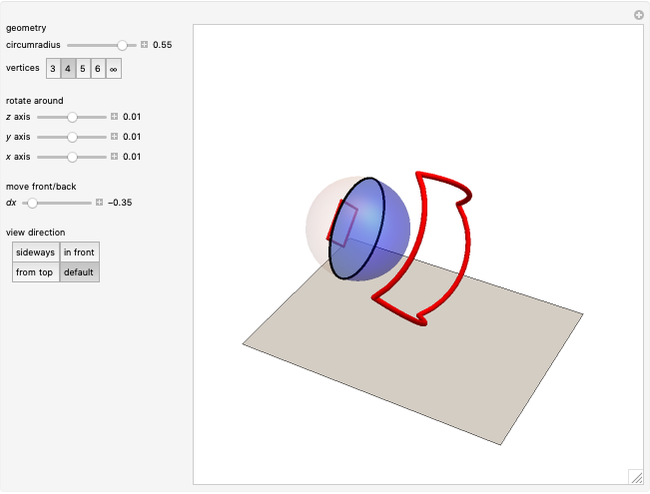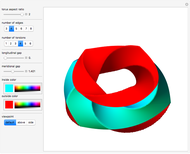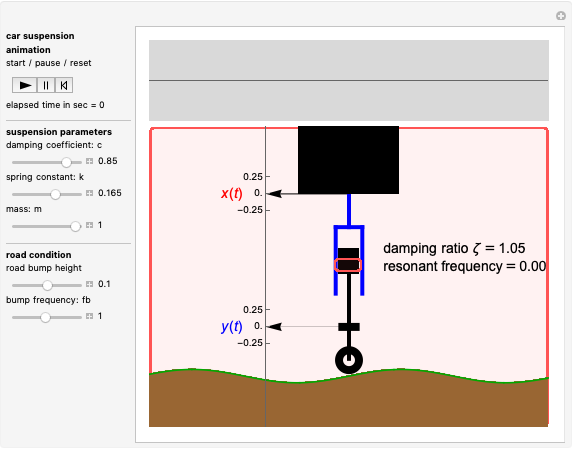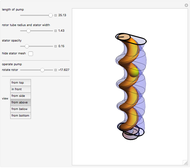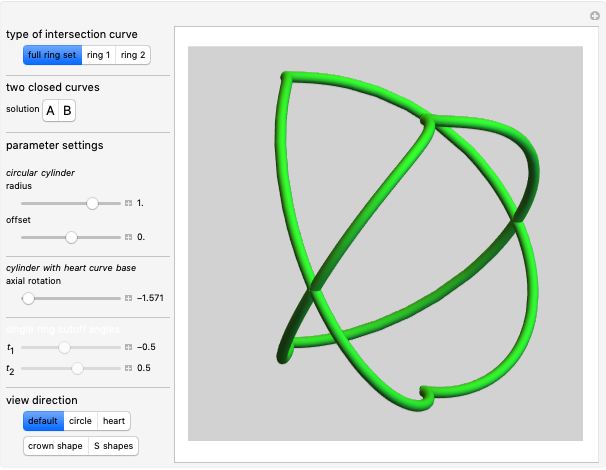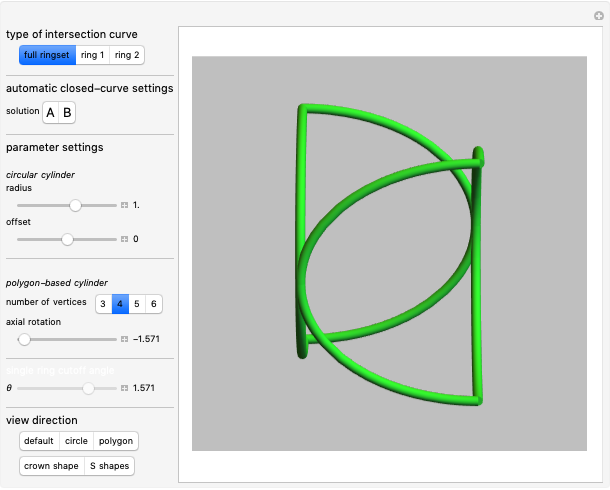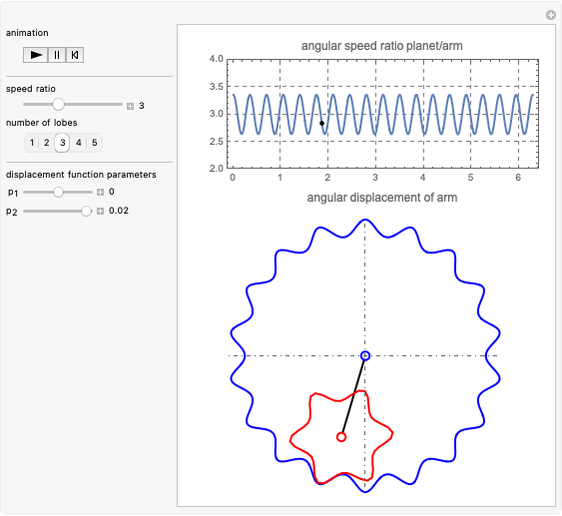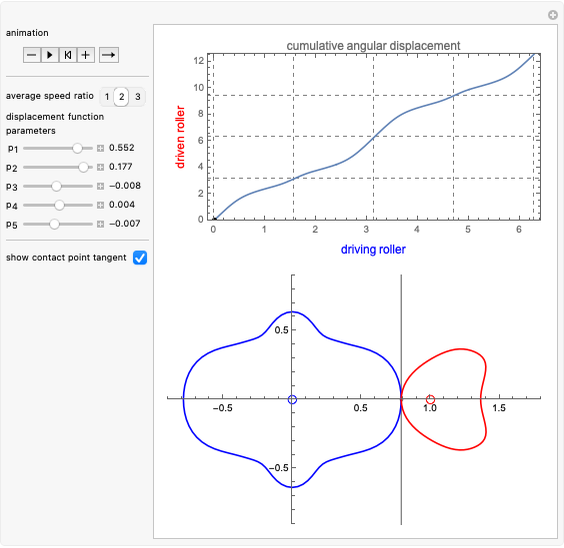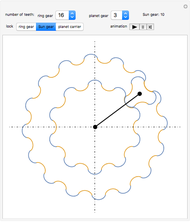Spherical Mirror Anamorphosis of Regular Polygons

Requires a Wolfram Notebook System
Interact on desktop, mobile and cloud with the free Wolfram Player or other Wolfram Language products.
This Demonstration explores the spherical anamorphic map of some regular polygons and a circle. The anamorphic images can only be seen as regular polygons when reflected in a spherical mirror [1].
Contributed by: Erik Mahieu (March 2019)
Open content licensed under CC BY-NC-SA
Snapshots
Details
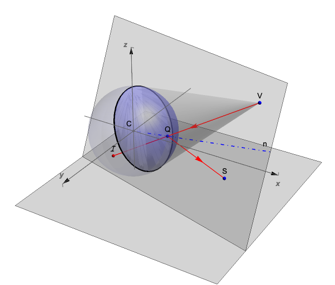
With a spherical mirror centered at  ,
,  is the observer's eye position,
is the observer's eye position,  is a (real) point outside the mirror and
is a (real) point outside the mirror and  is its perceived image point inside the mirror.
is its perceived image point inside the mirror.
One of the reflected light rays leaving  meets the mirror at
meets the mirror at  in such a way that its reflection meets the eye at
in such a way that its reflection meets the eye at  . But the eye at
. But the eye at  will now perceive the point
will now perceive the point  at
at  .
.
This mirror setup can be used for the computation of both reflection and anamorphism, and the points  and
and  form an "enantiomorphic pair" [2].
form an "enantiomorphic pair" [2].
The function sphericalAnamorphMap that maps reflected points  into anamorphic points uses the law of reflection [3] with the Mathematica functions ReflectionTransform and EuclideanDistance.
into anamorphic points uses the law of reflection [3] with the Mathematica functions ReflectionTransform and EuclideanDistance.
References
[1] M. Luque. "Images dans un miroir sphérique." (Mar 14, 2019) melusine.eu.org/syracuse/mluque/BouleMiroir/boulemiroir.html.
[2] Wiktionary. "enantiomorph." (Mar 6, 2019) en.wiktionary.org/wiki/enantiomorph.
[3] R. Ferreol, "Anamorphose en 3D," mathhcurve.com (blog). (Mar 6, 2019) www.mathcurve.com/courbes3d.gb/anamorphose/anamorphose3d.shtml.
Permanent Citation






